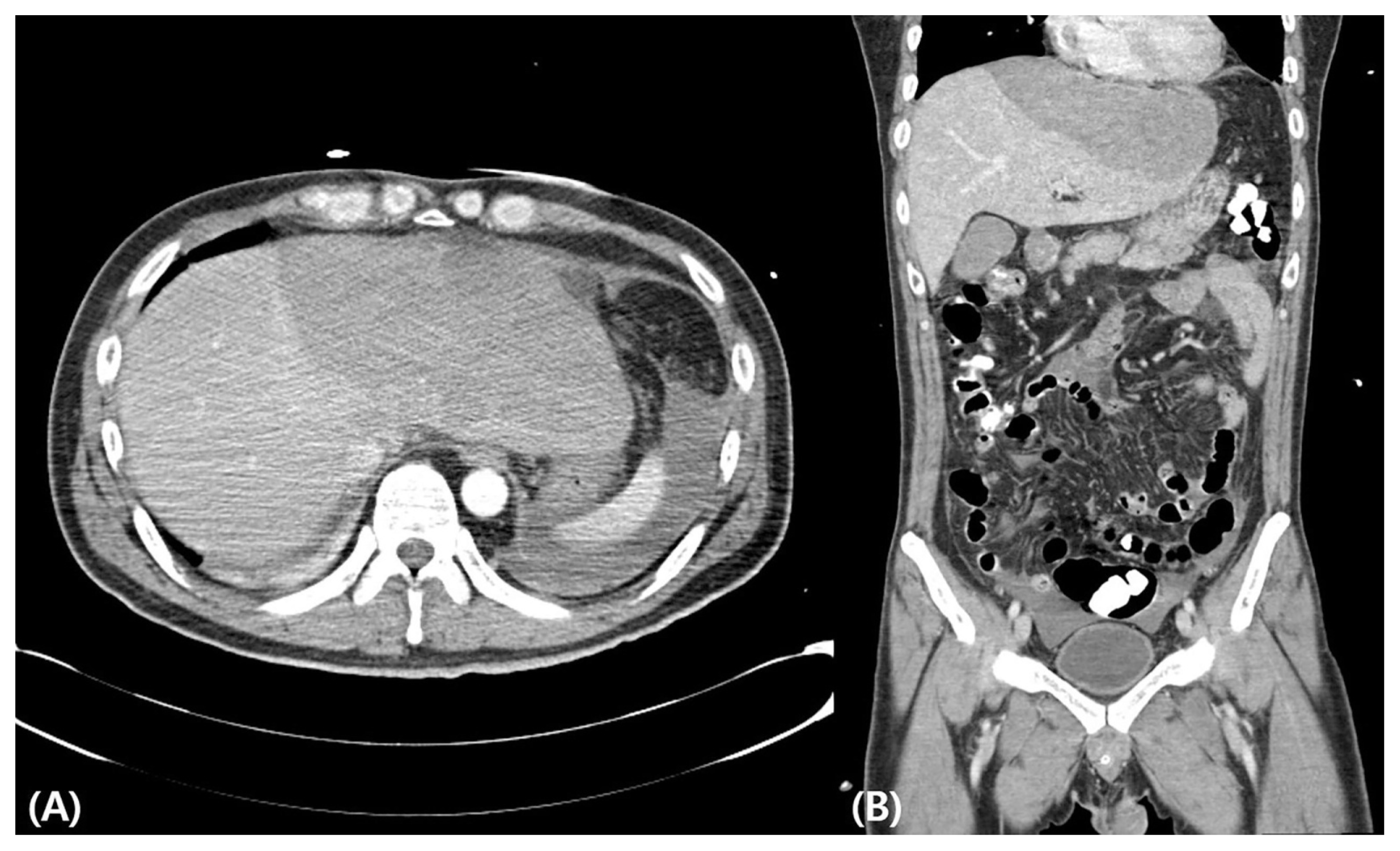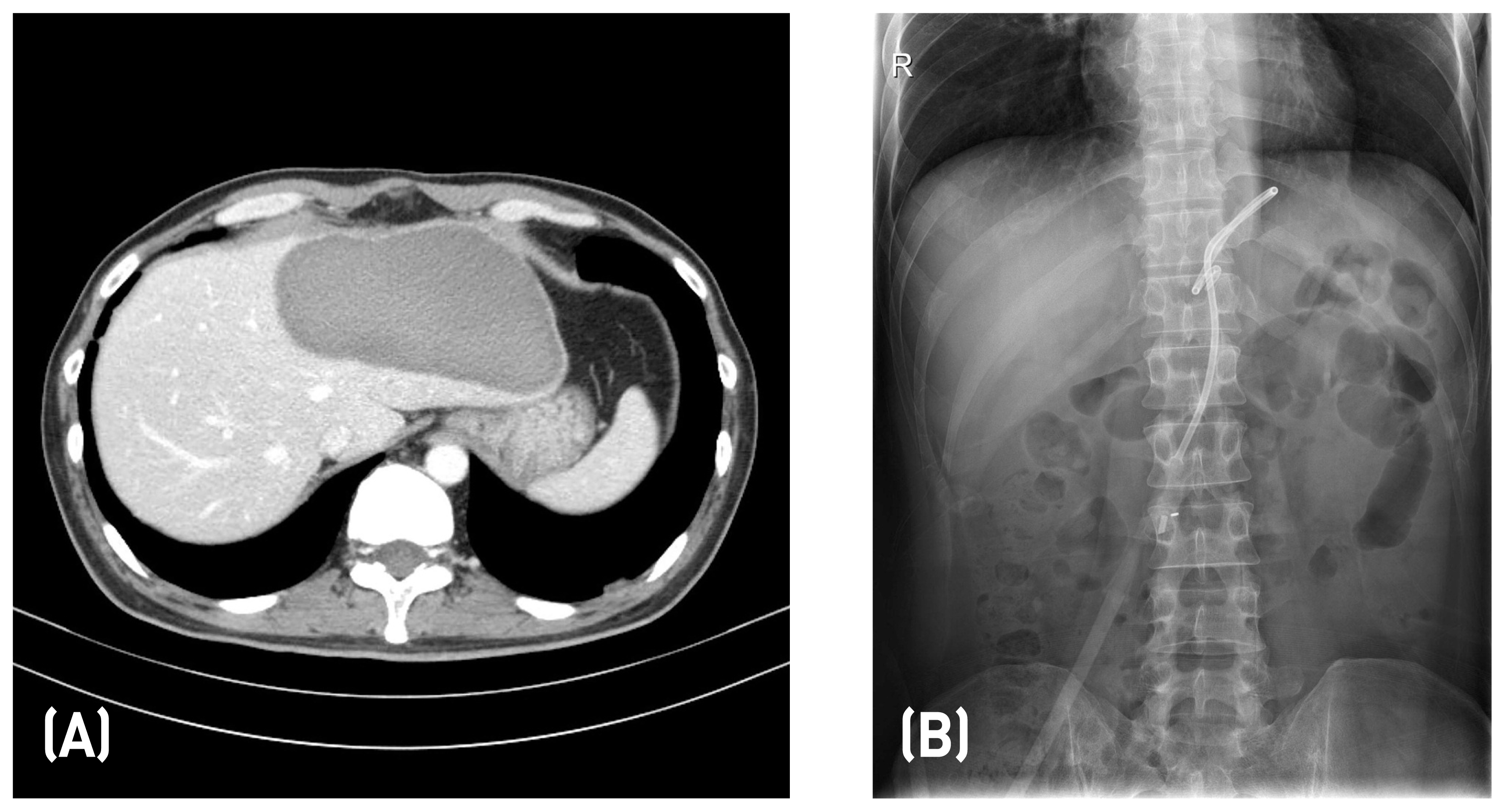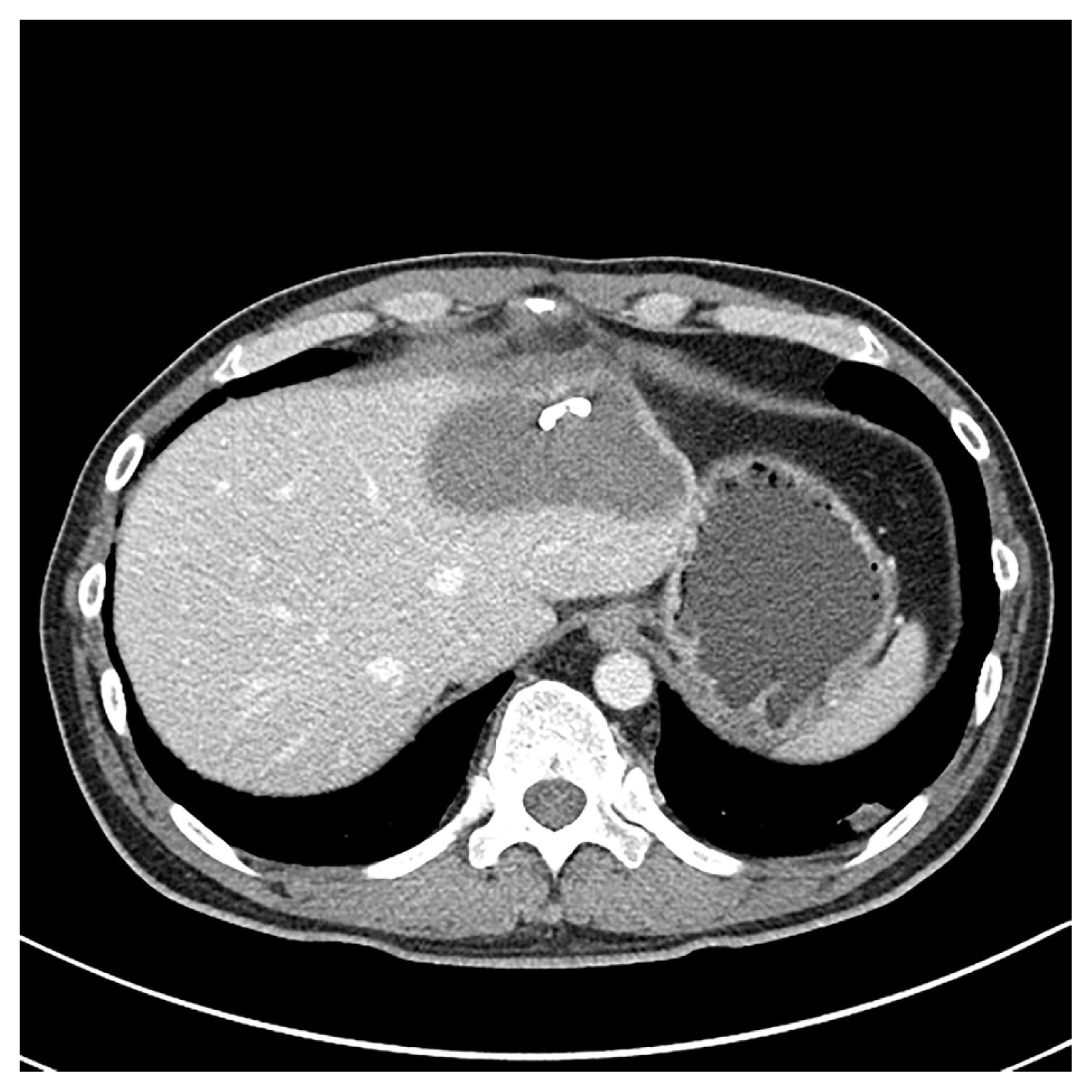1. Black CJ, Busuttil A, Robertson C. Chest wall injuries following cardiopulmonary resuscitation. Resuscitation. 2004; 63:339–43.

2. Deliliga A, Chatzinikolaou F, Koutsoukis D, Chrysovergis I, Voultsos P. Cardiopulmonary resuscitation (CPR) complications encountered in forensic autopsy cases. BMC Emerg Med. 2019; 19:23.

3. Kim MJ, Park YS, Kim SW, Yoon YS, Lee KR, Lim TH, et al. Chest injury following cardiopulmonary resuscitation: a prospective computed tomography evaluation. Resuscitation. 2013; 84:361–4.

4. Koutserimpas C, Ioannidis A, Siaperas P, Skarpas A, Tellos A, Velimezis G, et al. Intra-Abdominal Hemorrhage following Cardiopulmonary Resuscitation: A Report of Two Cases. Case Rep Emerg Med. 2018; 2018:5243105.

5. Monsuez JJ, Charniot JC, Veilhan LA, Mougué F, Bellin MF, Boissonnas A. Subcapsular liver haematoma after cardiopulmonary resuscitation by untrained personnel. Resuscitation. 2007; 73:314–7.

6. Wi J, Shin D. Liver Laceration with Hemoperitoneum after Cardiopulmonary Resuscitation. Korean J Crit Care Med. 2014; 29:141–3.

7. Powner DJ, Holcombe PA, Mello LA. Cardiopulmonary resuscitation-related injuries. Crit Care Med. 1984; 12:54–5.

8. Zahn G, Hauck M, Pearson DA, Green JM, Heffner AC. Major hemorrhage from hepatic laceration after cardiopulmonary resuscitation. Am J Emerg Med. 2015; 33:991. e3–4.

9. Meron G, Kurkciyan I, Sterz F, Susani M, Domanovits H, Tobler K, et al. Cardiopulmonary resuscitation-associated major liver injury. Resuscitation. 2007; 75:445–53.

10. Beydilli H, Balci Y, Erbas M, Acar E, Isik S, Savran B. Liver laceration related to cardiopulmonary resuscitation. Turk J Emerg Med. 2016; 16:77–9.

11. Ndzengue A, Hammoudeh F, Brutus P, Ajah O, Purcell R, Leadon J, et al. An obscure case of hepatic subcapsular hematoma. Case Rep Gastroenterol. 2011; 5:223–6.

12. Wagner WH, Lundell CJ, Donovan AJ. Percutaneous angiographic embolization for hepatic arterial hemorrhage. Arch Surg. 1985; 120:1241–9.

13. Ziegenfuss MD, Mullany DV. Traumatic liver injury complicating cardio-pulmonary resuscitation. The value of a major intensive care facility: a report of two cases. Crit Care Resusc. 2004; 6:102–4.
14. Machii M, Inaba H, Nakae H, Suzuki I, Tanaka H. Cardiac rupture by penetration of fractured sternum: a rare complication of cardiopulmonary resuscitation. Resuscitation. 2000; 43:151–3.

15. Nishimura T, Okamoto A, Fujisaki N, Shirai K, Yamada I, Nakao A, et al. LIVER INJURY ASSOCIATED WITH CHEST COMPRESSION IN CARDIOPULMONARY ARREST PATIENTS. Journal of the Japanese Association for the Surgery of Trauma. 2017; 31:17–23.

16. Oualha D, Aissaoui A, Belhaj M, Mesrati MA, Moussa A, Salem NH, et al. Liver Subcapsular Hematoma: A Rare Cause of Sudden Unexpected Death. Am J Forensic Med Pathol. 2017; 38:9–10.
17. Joseph JR, Freundlich RE, Abir M. Ruptured subcapsular liver haematoma following mechanically-assisted cardiopulmonary resuscitation. BMJ Case Rep. 2016; 2016.

18. Soar J, Maconochie I, Wyckoff MH, Olasveengen TM, Singletary EM, Greif R, et al. 2019 International Consensus on Cardiopulmonary Resuscitation and Emergency Cardiovascular Care Science With Treatment Recommendations. Resuscitation. 2019; 145:95–150.
19. Valenzuela TD, Kern KB, Clark LL, Berg RA, Berg MD, Berg DD, et al. Interruptions of chest compressions during emergency medical systems resuscitation. Circulation. 2005; 112:1259–65.

20. Lee CS, Lee GY, Park CG, Yang YC, Kim DH, Lee JH, et al. A Case of Subscapsular Hematoma of Liver During the Postpartum Period. The Korean Journal of Gastroenterology. 1998; 32:830–3.
21. Jo HU, Kim HK, Choi WS, Kim DH, Lee KS, Lee JS, et al. Subcapsular Hepatic Hematoma after Endoscopic Retrograde Cholangiopancreatography. Korean J Med. 2017; 92:401–5.

22. Bok Jin H, Eun Sook MDK, Hee Yeon MDL MD, et al. Spontaneous Subcapsular Hematoma of the Liver in a Patient on Maintenance Hemodialysis. Kidney Research and Clinical Practice. 2007; 26:637–40.
23. Lee SJ, Lee MH, Choi DY, Park SK, Yoon HS, Jung DY, et al. A Case of Pyogenic Liver Abscess with Spontaneous Subcapsular Hemorrhage. The Korean Journal of Gastroenterology. 2001; 38:449–52.
24. Choi JS, Kim Y, Park SY, Lee SY, Lee EJ, Sinn DH. Recurrent Spontaneous Subcapsular Hematoma of the Liver. Korean J Med. 2017; 92:177–81.







 PDF
PDF Citation
Citation Print
Print



 XML Download
XML Download